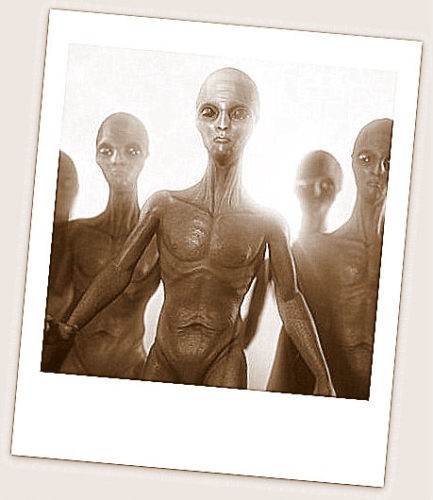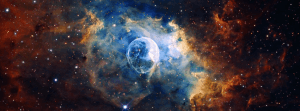Remote Viewing
Remote viewing (RV) is the practice of seeking impressions about a distant or unseen target, purportedly using extrasensory perception (ESP) or “sensing” with the mind.
Remote viewing was popularized in the 1990s upon the declassification of certain documents related to the Stargate Project, a $20 million research program that had started in 1975 and was sponsored by the U.S. government, in an attempt to determine any potential military application of psychic phenomena. The program was terminated in 1995 after it failed to produce any actionable intelligence information.
HISTORY OF THE REMOTE VIEWING PROGRAM
Remote Viewing in modern times originates from the U.S. Government’s interests in psychic espionage during the Cold War with the Soviet Union. Back during World War II, the Soviets had heard rumors that the U.S. Military were using psychic communications at sea. While it’s not clear now whether this was really true, the Soviets believed it and started their own psychic training within their military and intelligence agencies many decades ago. The U.S. Government learned of this program and, in the early 1970’s, decided to create their own remote viewing CIA training program.
STANFORD RESEARCH INSTITUTE REMOTE VIEWING TESTS
Money and resources were given by the Central Intelligence Agency to Stanford Research Institute (SRI), located on the campus of Stanford University at the time, to test the possibility of remote viewing. The goal was to disprove that psychic functioning was real. No one wanted it to exist. It was the last thing that the military establishment wanted to worry about, especially if it was a new Soviet threat.
Physicists Russell Targ and Hal Putoff working at SRI were tasked with determining whether Extrasensory Perception (ESP) and related phenomena were real or not. Targ and Putoff set about to locate some natural psychics and test them. Their first subject was artist, psychic and scientist Ingo Swann of New York City who had demonstrated an ability to accurately “remote view” weather in various American cities. He had published some articles about ESP and also psychokinesis, the ability to mentally affect distant objects, when he worked with researcher Gertrude Schmeidler of City College, New York and the American Society for Psychical Research.
Working with Schmeidler, Swann had shown that he could affect the temperature of thermistors sealed in insulated thermos canisters twenty-five feet away from him. At a friend’s request, Swann sent his published findings to Putoff, who asked Swann to come to SRI and demonstrate his abilities. The first thing they had Swann do was to see if he could affect a super sensitive, electromagnetically shielded quark detector buried five feet underground in a cement floor. Every time Putoff asked Swann to think about the detector (used to detect subatomic particles), the readings from the device would noticeably deviate from the baseline readings. Putoff was convinced that Swann had special abilities and so the program to test and develop remote viewing began.
EXPANDED SCOPE
At first they had Swann view objects in a box: this was a practice he was good at but quickly became bored with. Swann said to them: “I can view anything in the universe, this is a trivialization of my abilities.” A few days later he came up with a new way to do remote viewing: viewing map coordinates. Targ and Putoff went out and bought the biggest atlas they could find at the local book store. Swann’s coordinate map viewing turned out to be a big success. A critic at the Central Intelligence Agency suggested that maybe he had memorized the entire global map.
Swann went on to use randomly chosen numerical coordinates to view randomly selected events, people and structures around the planet. He performed equally well using this coordinate-based viewing system.
WHAT IS REMOTE VIEWING?
Swann coined to term “remote viewing” to describe the process though you can question whether the information is actually remote to the viewer or whether the process is entirely visual. Some people are more sensitive to auditory, kinesthetic or other types of sensory information and few viewers actually “see” the target very clearly. Nonetheless, the name stuck and was sufficient to convince the intelligence agencies to fund the project.
Other viewers were also tasked to help Targ and Putoff understand remote viewing. Pat Price, a former police commissioner from Burbank, CA also proved to be an excellent viewer. Price used his own system to view where he actually imagined that he was at the distant target site. His results were so good that the Central Intelligence Agency hired him to work for them directly. Back East, another natural viewer Joe McMoneagle, also known as “Remote Viewer No. 1,” worked directly with the U.S. Army and the Defense Intelligence Agency. He was also tested and found to have amazing abilities to describe and sketch distant locations. Upon retirement, McMoneagle was awarded a Legion of Merit award, in part, for his five years of remote viewing missions for the military and various government agencies.
COORDINATE REMOTE VIEWING
However, Swann was able to describe, with great precision, what he was doing with his mind and attention as he was viewing, an ability other viewers did not have. This allowed him to come up with a 6-stage system that could be taught to anyone, including you or me. It became known as CRV: Coordinate (or Controlled) Remote Viewing.
Swann’s CRV system is based on separating out signal from noise in your mind as you are viewing. All the information is recorded during a session, but the viewer puts the noise in a different place on the paper than the signal. At the end of the session, you can separate them from one another. The method became the basis of the remote viewing protocols that the U.S. army taught to several groups of viewers. The program lasted until 1995 when it was declassified; about $20 million was spent over the two decades.
PRINCETON’S RANDOM NUMBER GENERATOR RESEARCH
During this time, the Princeton Engineering Anomalies Research Lab (PEAR) at Princeton University, run by Bob Jahn and Brenda Dunn, also conducted twenty years of research into remote viewing and so-called “micro-psychokinesis” with experiments on the effect of human intention on Random Number Generators (RNGs). They found that, looking at the cumulative results of hundreds of thousands of trials, that their subjects could influence about 2 or 3 events per 10,000 random coin flips seemingly moving the device away from true randomness in an inexplicable way. The odds of these results being by chance were an astonishing 375 trillion to one.
OPEN THE APERTURE OF YOUR PERCEPTION
When someone asks you to describe something, you normally proceed to name what you’re perceiving using nouns and symbols. Remote viewing is just the opposite. You begin by describing your perceptions without trying to identify anything about what they mean or what the larger picture is. You begin with basic gestalts: fundamental, general components of the target site like whether it’s manmade or living or natural. You then proceed to basic colors, smells, temperatures, shapes and sizes.
Only after you’ve been describing the target for a while can you proceed to more specific ideas and possibly names, nouns and more analytical types of information.
In this you way, Swan would say that you are opening the aperture of your perception, slowly and resisting the temptation to draw conclusions about what you are viewing.
FOLLOW THE AMBIGUITY
Our minds are always attempting to draw conclusions from what we’ve perceiving at any given moment, but because you have no conscious, physical information to work from in RV, you’re almost always likely to be wrong if you do so. Which brings us to one of the great paradoxes of RV: the fainter the perception, the more likely it is to be accurate and the less likely you are to feel confident in that perception.
In other words, the more confident you are about your psychic perceptions during the session, the less likely those perceptions are to be correct! And the less confident you feel, the more likely it is that your perceptions are right on. How’s that for a paradox?
Good remote viewers learn to trust the feelings of uncertainty and ambiguity they get while doing a session.
Someone familiar with the military viewing program told me that if a viewer finished a session and said with confidence “I nailed it!,” that viewer’s session would be thrown in the garbage. A good session is one in which the viewer has no idea what they’ve been doing or whether it’s accurate or not.
This is very different from the way our educational system, which stresses linear and rational thinking, trains us to deal with acquiring and processing information. And believe me, it takes some time to get used it.
Eventually, you see the benefits: you learn to trust your intuition more and don’t necessarily need to rationalize everything before you take action. You become more spontaneous which can often be a good thing if you’re used to over-thinking things in your life.
SCIENTIFIC ANALYSIS OF THE REMOTE VIEWING PROGRAM
When the RV program was declassified, one of the two people asked to evaluate the program was statistician Jessica Utts, the head of the American Statistical Association at the time of this writing. She concluded: “Using the standards applied to any other area of science, it is concluded that psychic functioning has been well established. Arguments that these results could be due to methodological flaws in the experiments are soundly refuted. Effects of similar magnitude to those found in government-sponsored research at SRI and SAIC (another government sponsored think tank) have been replicated at a number of laboratories across the world. Such consistency cannot be readily explained by claims of flaws or fraud.”
And researcher Dean Radin, doing very complex meta-analyses using the results of many studies about psychic perception over many decades, came to the same conclusion. Looking at the entire population, not just trained viewers, RV is a weak effect, about four to eight percent higher than expected if we were only using our physical senses to gather information: yet, it’s consistently there in everyone.
HOW DOES REMOTE VIEWING WORK?
So RV is scientifically proven to work. But how? What’s going inside the viewer’s body and mind? How do they access far away information with such great accuracy? You can pick your favorite explanation but the truth is, no one knows for sure. But my feeling is that it has something to do with resonance, vibration and frequency.
Right brain thinking tends to be free flowing, intuitive and descriptive while left brain thinking is more analytical, linear and symbolic. Good remote viewers learn to distinguish their own left and right-brain thinking. They’re good at discerning the difference between the two and can separate signal from noise. Remote viewing tends to be more more accessible to the right-brain type.
PICKING UP SIGNALS THROUGH VIBRATIONAL RESONANCE
Where does the information come from? Well, if you look around the space wherever you are at the moment, the air will seem empty: you can’t see the air with your eyes. But you also know that it’s filled with electromagnetic information from cell phone signals, radio waves, TV signals, etc.. So empty space can be filled with information coming to you from distance. Just because you can’t see it doesn’t mean it isn’t there.
That information is coming to you through a type of vibrational resonance that fills space-time. When you have a receiver that is tuned to the frequency of those signals, you’ll pick them up. All you need to do after that is to amplify the signal. Remote viewing doesn’t necessarily amplify the signal of what you’re viewing, but it does teach you how to reduce your own mental noise, your monkey mind.
WHAT ARE THE IMPLICATIONS OF REMOTE VIEWING?
Well, there are two levels to the answer. First off, you have many more abilities than you are probably aware of. You may be a talented psychic and not even know it if this type of thing was discouraged in the family you grew up in. Or your intuition in some area or specialty may be very good.
And secondly, there is a component of all of us that is non-local and connected to everything else in the universe. Classical science, based on the ideas of direct, local, mechanistic causes and interactions can’t help us here. It’s just too limited of a worldview. And even formal quantum mechanics doesn’t allow for long range information exchange for more than a few picoseconds between correlated particles. If you ask a physicist if entangled particles can exchange information, they’ll most likely say “no.”
So RV and similar subjects demand a new perspective and theoretical framework for describing our universe. And so our adventures with these topics are just beginning.
LEARN MORE ABOUT REMOTE VIEWING
If you’d like to learn more about RV I recommend any books written by those who participated in the program such as Joe McMoneagle, Lyn Buchanan, Paul Smith, Ingo Swan, Dale Graff or any of the researchers like Russell Targ or Ed May who conducted and analyzed the early experiments. You might also want to read books from those who independently studied the phenomena after the official program closed such as Dean Radin, Courtney Brown or Angela Thompson Smith. And don’t hesitate to check out IRVA, the International Remote Viewers Association, which holds an annual conference.
No one totally understands how it works so you’re likely to learn the most by keeping an open, but healthy skeptical attitude as you read about the subject and perhaps try it out for yourself. If you’ve never had any spiritual or subtle awareness training before I highly recommend daily meditation. I also suggest you believe in your own experiences before trusting anyone else’s. If getting involved with RV totally changes your life, like it did mine, don’t say I didn’t warn you. Excitement awaits you in any case: I guarantee it.




